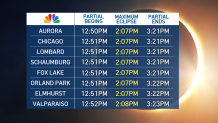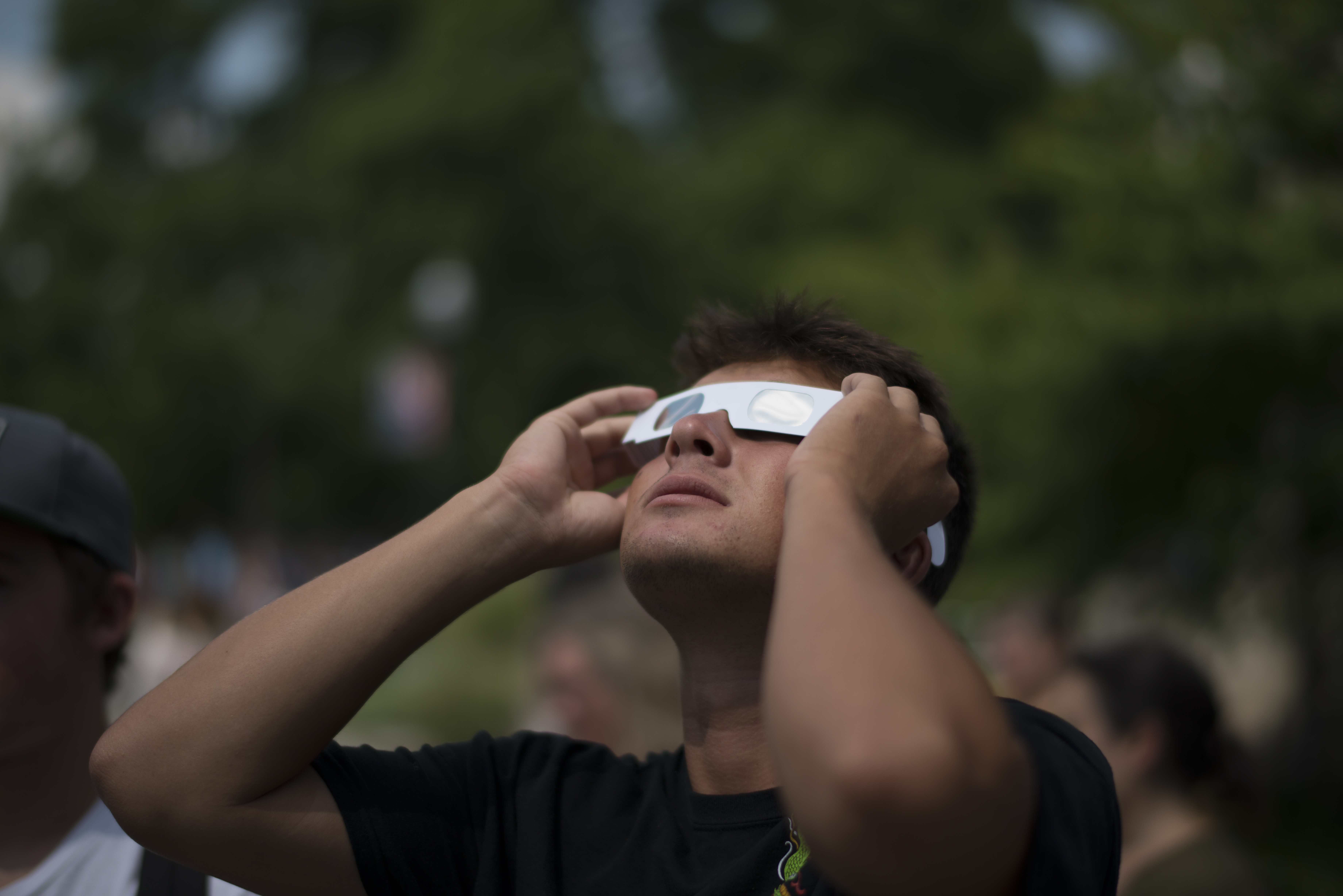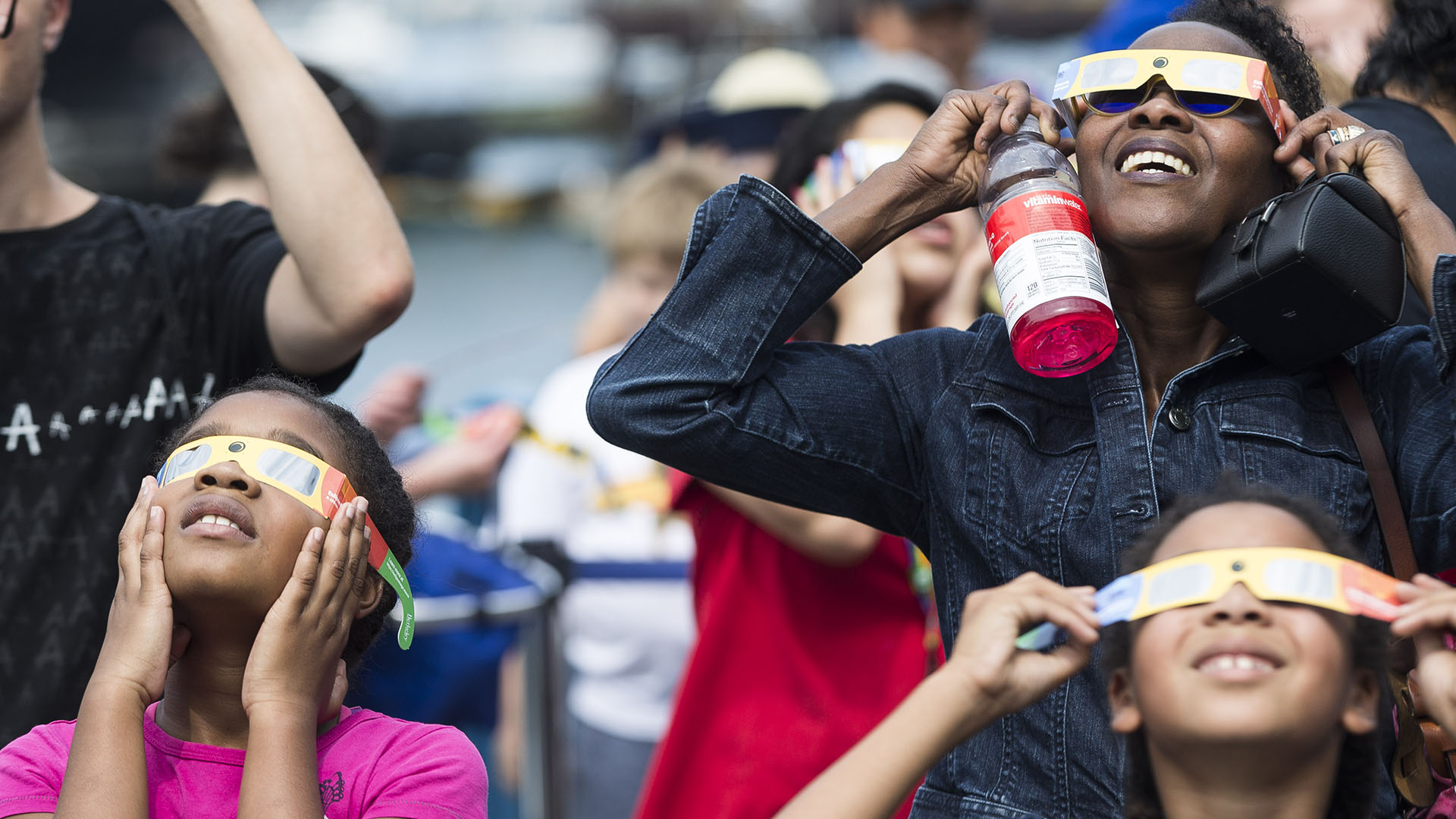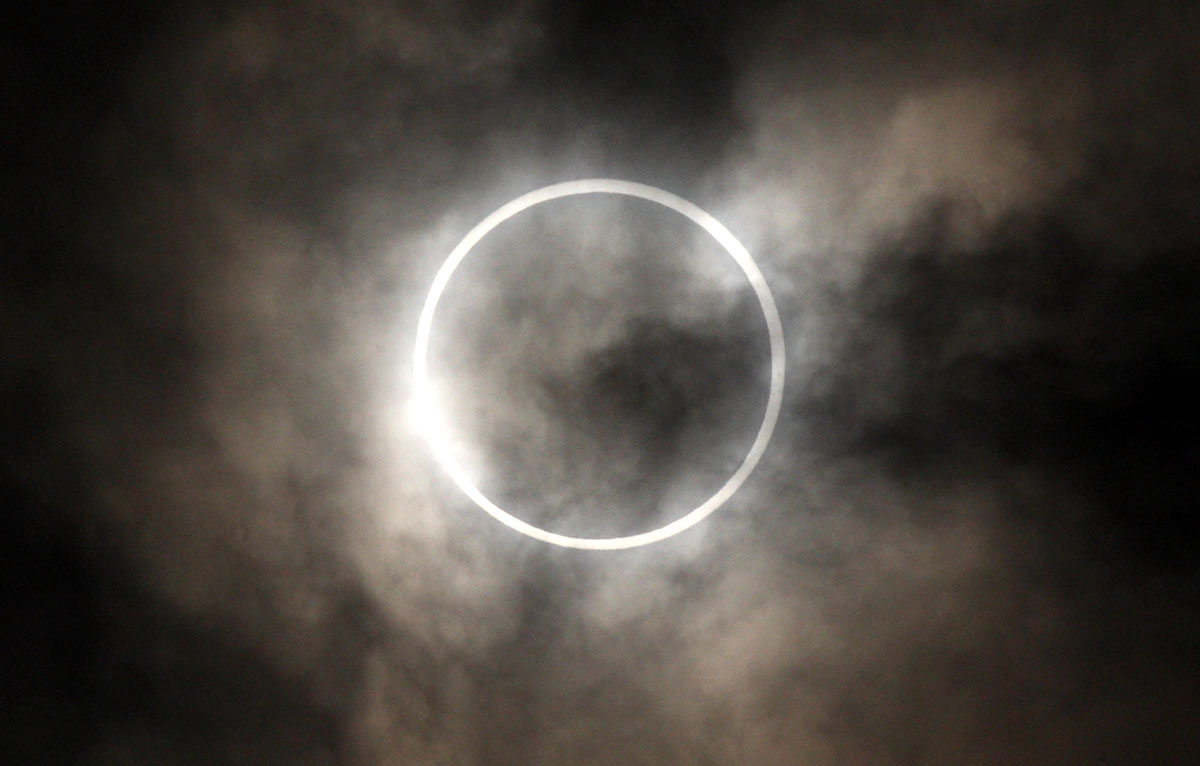The 2024 total solar eclipse is slated to be visible, at least in part, across Illinois and the Chicago area, but will you be able to see it and for how long?
While some parts of the state are in the coveted path of totality on April 8, meaning they will see the sun completely covered by the moon for several minutes, Chicago and its surrounding suburbs will still experience an estimated 94% totality. That number is higher than the eclipse in 2017 and even higher than any partial eclipses expected in the near future.
Parts of southern Illinois and central Indiana will be in the area of totality.
Weather and cloud cover, however, could have an impact on what exactly you see and when.
So how long will it last and what could you actually see?
According to Roman, early forecast predictions Tuesday showed the forecast for the April 8 eclipse could see rain and thick clouds.
It is worth noting, however, that predictions this far out aren't as reliable and conditions could still change in the lead up to the event.

According to the National Weather Service's most recent predictions, storms are possible across much of the path of totality. Some of those storms could even become severe.
Southern Illinois appears to be in the path of potential rain and thunderstorms, as of Tuesday. Across Illinois, cloud cover forecasts indicated 30-40% coverage in the predictions.
Feeling out of the loop? We'll catch you up on the Chicago news you need to know. Sign up for the weekly Chicago Catch-Up newsletter here.
The NWS also notes, however, that skygazers should "expect the forecast to change" and check back continuously.
The rare astronomical phenomenon is taking place across a wide swath of the United States, marking what NBC 5 Storm Team Meteorologist Kevin Jeanes believes could be "the greatest solar eclipse across the U.S. in our lifetime."
According to NASA scientists, a total solar eclipse occurs when the new moon intersects the path of the sun in the sky, causing the sun to be partially and then nearly completely blocked from view.
In Carbondale, the largest Illinois city included in the path, totality will commence at approximately 1:59 p.m.
Assuming there are clear skies, stargazers there will be able to look at the eclipse without any aid whatsoever, with darkened skies and the famed “corona” blazing around the edges of the moon.
This period will last just a few minutes. Totality is expected to end at approximately 2:03 p.m. as the eclipse follows a diagonal line over Fairfeld and exits at Mount Carmel, according to state officials.
If you'll be in the Chicago area and won't be able to see the eclipse in totality, there is a silver lining. The partial eclipse will be visible for a while longer.
For areas outside of the path of totality, it will not be safe to view the eclipse without glasses or other tools.

Here's a city-by-city breakdown of what to expect and when, according to Time and Date.
Aurora
Partial eclipse begins: 12:50:22
Maximum eclipse: 14:06:37
Partial eclipse ends: 15:21:07
Chicago
Partial eclipse begins: 12:51:28
Maximum eclipse: 14:07:41
Partial eclipse ends: 15:22:02
DeKalb
Partial eclipse begins: 12:50:03
Maximum eclipse: 14:06:09
Partial eclipse ends: 15:20:36
Evanston
Partial eclipse begins: 12:51:38
Maximum eclipse: 14:07:45
Partial eclipse ends: 15:22:00
Fox Lake
Partial eclipse begins: 12:51:29
Maximum eclipse: 14:07:20
Partial eclipse ends: 15:21:26
Lombard
Partial eclipse begins: 12:50:57
Maximum eclipse: 14:07:09
Partial eclipse ends: 15:21:33
Orland Park
Partial eclipse begins: 12:50:48
Maximum eclipse: 14:07:10
Partial eclipse ends: 15:21:42
Plainfield
Partial eclipse begins: 12:50:19
Maximum eclipse: 14:06:39
Partial eclipse ends: 15:21:14
Schaumburg
Partial eclipse begins: 12:51:05
Maximum eclipse: 14:07:10
Partial eclipse ends: 15:21:29
Wheaton
Partial eclipse begins: 12:50:48
Maximum eclipse: 14:07:00
Partial eclipse ends: 15:21:25
(Check your city here)
For those looking to be in the path of totality, here's a list of Illinois cities that fall in that category, according to the Illinois DNR:
Carbondale
Totality begins: 13:59:15
Maximum eclipse: 14:01:20
Totality ends: 14:03:25
Makanda
Totality begins: 13:59:09
Maximum eclipse: 14:01:14
Totality ends: 14:03:19
Alto Pass
Totality begins: 13:58:56
Maximum eclipse: 14:01:01
Totality ends: 14:03:06
Fairfield
Totality begins: 14:01:19
Maximum eclipse: 14:03:21
Totality ends: 14:05:23
Olney
Totality begins: 14:02:12
Maximum eclipse: 14:04:07
Totality ends: 14:06:03
Golconda
Totality begins: 14:00:39
Maximum eclipse: 14:02:04
Totality ends: 14:03:30
Effingham
Totality begins: 14:03:25
Maximum eclipse: 14:03:49
Totality ends: 14:04:13
Mt. Vernon
Totality begins: 14:00:35
Maximum eclipse: 14:02:28
Totality ends: 14:04:20
Marion
Totality begins: 14:01:53
Maximum eclipse: 14:03:54
Totality ends: 14:05:56




